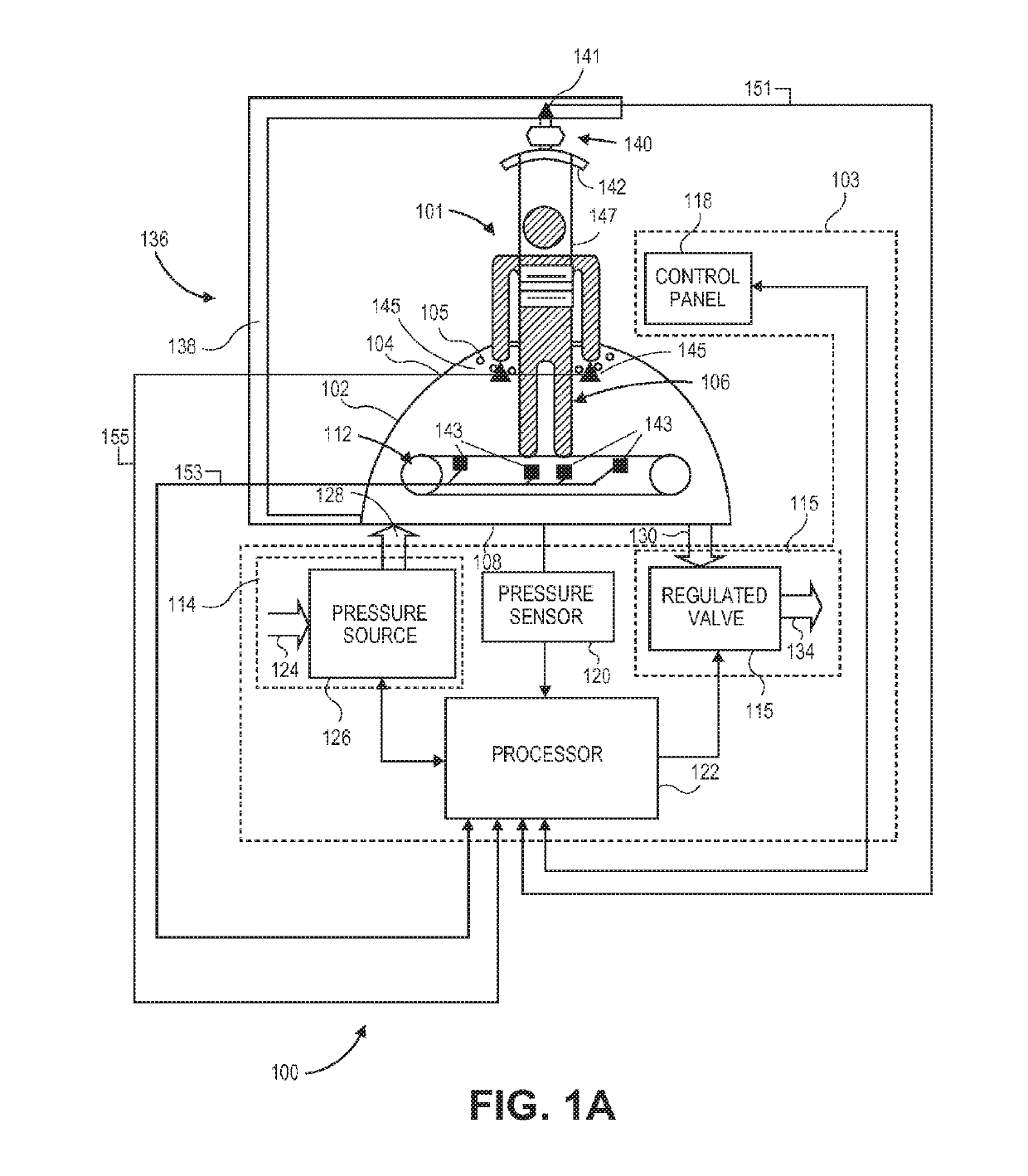Differential air pressure systems and methods of using and calibrating such systems for mobility impaired users
a technology users, applied in the field of differential air pressure systems for use, can solve the problems of substantially altering the activation pattern of muscles of users, inducing injuries, uneven distribution of upward supporting force of such water-based systems on the user's body, etc., to improve stroke patients' motor skills and improve cardiovascular function.
- Summary
- Abstract
- Description
- Claims
- Application Information
AI Technical Summary
Benefits of technology
Problems solved by technology
Method used
Image
Examples
Embodiment Construction
[0102]Described here are differential air pressure (DAP) systems designed to be used by individuals with impaired mobility. Generally, DAP systems utilize changes in air pressure to provide positive or negative weight support for training and rehabilitation systems and programs. Various examples of DAP systems are described in International Patent Application Serial No. PCT / US2006 / 038591, filed on Sep. 28 2006, titled “Systems, Methods and Apparatus for Applying Air Pressure on A Portion of the Body of An Individual,” International Patent Application Serial No. PCT / US2008 / 011807, filed on Oct. 15 2008, entitled “Systems, Methods and Apparatus for Calibrating Differential Air Pressure Devices,” International Patent Application Serial No. PCT / US2008 / 011832, filed on Oct. 15, 2008, entitled “Systems, Methods and Apparatus for Differential Air Pressure Devices,” and International Patent Application Serial No. PCT / US2010 / 034518, filed on May 12, 2010, entitled “Differential Air Pressure ...
PUM
 Login to View More
Login to View More Abstract
Description
Claims
Application Information
 Login to View More
Login to View More - R&D
- Intellectual Property
- Life Sciences
- Materials
- Tech Scout
- Unparalleled Data Quality
- Higher Quality Content
- 60% Fewer Hallucinations
Browse by: Latest US Patents, China's latest patents, Technical Efficacy Thesaurus, Application Domain, Technology Topic, Popular Technical Reports.
© 2025 PatSnap. All rights reserved.Legal|Privacy policy|Modern Slavery Act Transparency Statement|Sitemap|About US| Contact US: help@patsnap.com



